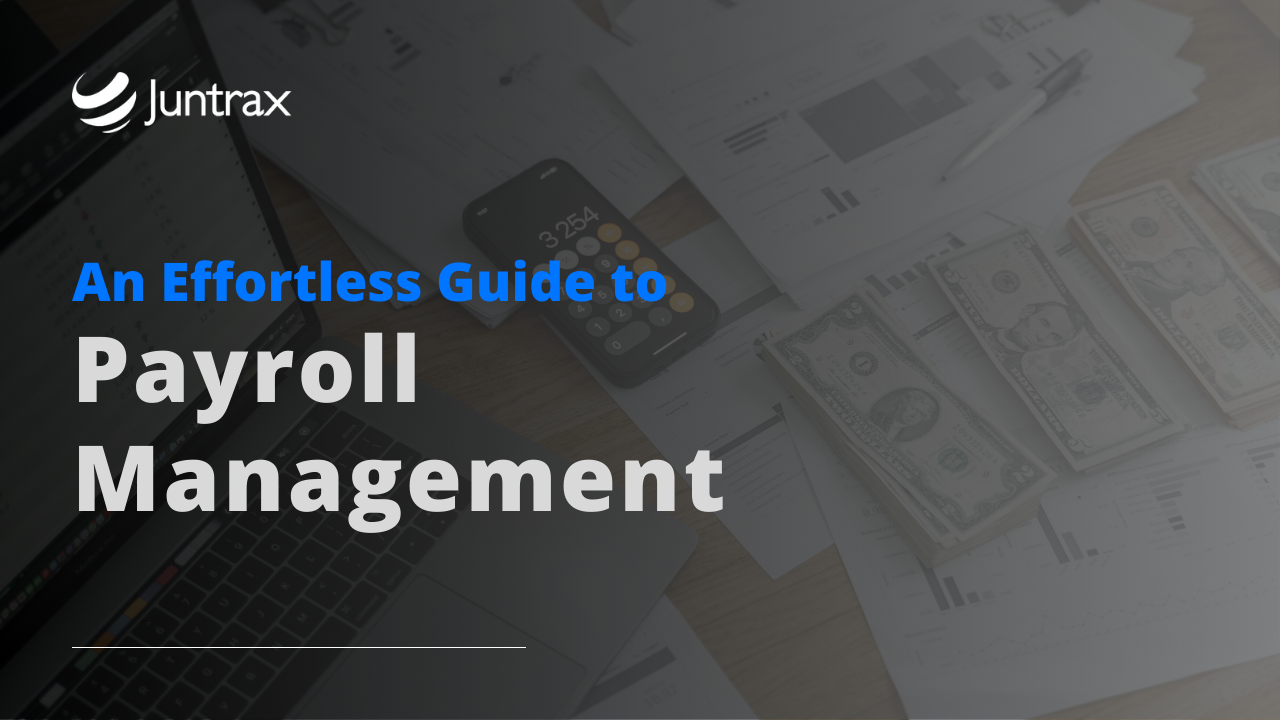An Effortless Guide to Payroll Management

Deferment of tax payments, unaudited accounts, and unfollowed TDS requirements leading to fines and imprisonment– this is the worst nightmare an organization can ever have!
Well, these apparently haven’t occurred with your organization but they can happen if there is improper payroll management.

In the context of business, Payroll Management is the administration of an employee’s financial records, including their salary, deductions, bonuses, liquidity, investments, profitability, and net pay, in line with the country’s labor regulations. It requires both a comprehensive strategy and hands-on implementation.
Even though payroll management is difficult, it needs to be done properly since errors in payroll management can cost a firm both money and its hard-earned reputation. Hence, organizations need to learn how to handle payroll for workers in several countries, comply with local laws and regulations, and follow various tax laws and standards.
In this guide, we’ve compiled possible solutions to overcome payroll processing challenges that companies face time and again. Read on to know more!
Strategies to Overcome Payroll Management Challenges
Here are some strategies to ease your payroll processing:
Follow a Payroll Calendar
An effective payroll calendar displays each pay period or date for the whole fiscal year. Removal of any uncertainty among employees regarding their pay dates and the time period that their paychecks would cover simplifies the payment processing procedure.
A payroll calendar is useful for all employees as it aids in the planning and execution of payroll tasks, in addition to assisting the employees in understanding their probable dates of salary credit. It is a good idea to highlight certain information with colored typefaces, such as premature card deadlines due to a potential holiday.
Acquaintance with the latest payroll laws and regulations
Keeping up with the latest rules and regulations is one of the key components of handling payroll. One of the most successful ways to manage people at work is to group employees according to their roles. An individual working for a limited period of time can be classified as an independent contractor, for instance. The benefits, incentives, and tax deductions that apply might not be the same as those that apply to the regular workforce. As a result, it makes payroll processing for setting up an employee account simpler. Nonetheless, it is crucial to comprehend how to correctly classify employees in accordance with laws and rules.
HR staff should take payroll training
Although HR would have given all employees better clarity on payroll laws, payroll training will them avoid any sort of misunderstanding or uncertainty between the payroll department and HR personnel. This enhances productive working connections between both the departments and staff members and management.
Distribution of Payroll Tasks
We know that managing payroll records can be difficult and if you have a small workforce supervising it, they are prone to making mistakes. You ought to think about distributing their payroll responsibilities. Nonetheless, everything must be documented, and the new procedure must be explained to all parties involved.
By dividing the payroll tasks (s), a particular employee’s workload will reduce. Also, it will assist in reducing errors, preventing fraud, processing payroll for more employees, meeting deadlines, etc.
Keep Records of Your Payroll Process
In order to manage payroll effectively, this step is essential. The payroll system’s complexities are revealed step-by-step as it is documented. This makes it easier to spot process shortcomings (if any) and gives you the chance to fix them. After the creation of a sound payroll system, it should be distributed to the payroll team so that everyone is aware of how to conduct payroll audits and how it will be managed moving forward. In case of emergency, it would be smart to offer instructions on how to complete payroll manually. It should also include instructions on how to print and file tax returns and payroll registers, as well as the names of those in charge of collecting pay paychecks and stubs.
Employ an Automated Payroll Software
Your company runs the risk of making errors while processing payroll manually, which could thereby result in fines and penalties; plus it’s time-consuming.
A cloud accounting software can easily automate payroll management services. It facilitates rapid and simple payroll handling and management. Payroll management software eliminates duplicate duties like filling out timesheets or updating them. It also provides a calculator to calculate how much payroll taxes should be withheld from employees’ salaries. Payroll processing software comes in a variety of forms, but choosing the right one for your company can be challenging.
Having said that, you must be wondering what features you should be looking for in automated payroll software. Here’s a list of four significant features:
Four Must-Have Features in an Automated Payroll Software
Monitors attendance and time
Employers must accurately log the hours worked using time and attendance software in order to determine the correct pay for non-exempt workers.
Determines the employee wage
After determining gross earnings, employers are required to conduct payroll deductions, such as taxes, superannuation, PAYG withholding, and optional deductions like health insurance, and child support payments.
Payroll software, which also determines the employees’ actual net or “take home” pay can also manage all these deductions.
Safeguards employee data
Top payroll management software uses modern security to protect sensitive employee data. They can automate the security of your account and cleanup tasks, perform updates for you, and notify you right away if they see any suspect or fraudulent behavior.
Provides pay statements to employees
Payroll software supporting STP allows you to send the necessary data to the ATO concurrently with processing payroll.
Workers can then access into myGov to view their payment summary information. ATO uses STP reports to formally keep track of the money paid out in wages, salaries, and contributions to superannuation.
Wrapping it up
Although it can be hectic, payroll management is essential for the efficient operation of the company. Consequently, you must ensure that you have the appropriate personnel and equipment for the job.
Nonetheless, given the complexities of payroll processing, you can also outsource your payroll to a reputable service provider like Juntrax.